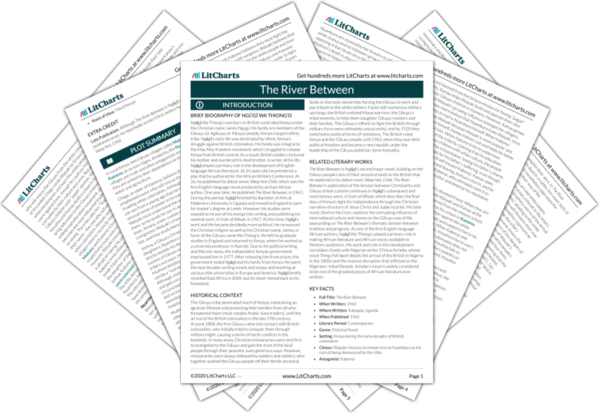Kameno, one of the two Gikuyu villages where the novel is set, represents the Gikuyu’s traditional tribal identity. Most notably, Kameno is the home of the Kiama, a governing council that enforces the tribe’s demand for ideological purity. It was also home to Mugo and Chege—two men who, in their lifetimes, warned of the white people’s threat to Gikuyu culture. After being kicked out of a school run by white missionaries for having “pagan” parents, Waiyaki builds his first school in Kameno, signifying that it is a school for Gikuyu children and not a school that will aim to replace Gikuyu beliefs with Christian ones. And when Muthoni wants to be circumcised and embrace her tribal identity, she moves to Kameno to put her plan into action, further cementing it as a symbol of the Gikuyu’s traditional tribal identity.
Kameno Quotes in The River Between
The ridges were isolated. The people there led a life of their own, undisturbed by what happened outside or beyond. Men and women had nothing to fear. The [white people] would never come here. They would be lost in the hills and the ridges and the valleys.

Unlock explanations and citation info for this and every other The River Between quote.
Plus so much more...
Get LitCharts A+The ridges slept on. Kameno and Makuyu were no longer antagonistic They had merged into one area of beautiful land, which is what, perhaps, they were meant to be.
Many teachers came from all over the ridge to see him, and many elders and children came to him with various problems. But in spite of all this Waiyaki was losing that contact with people that can only come through taking part together in a ritual. He was becoming too obsessed with the schools and the widening rift and divisions.
The land was now silent. The two ridges lay side by side, hidden in the darkness. And Honia river went on flowing between them, down through the valley of life, its beat rising above the sark stillness, reaching into the heart of the people of Makuyu and Kameno.












